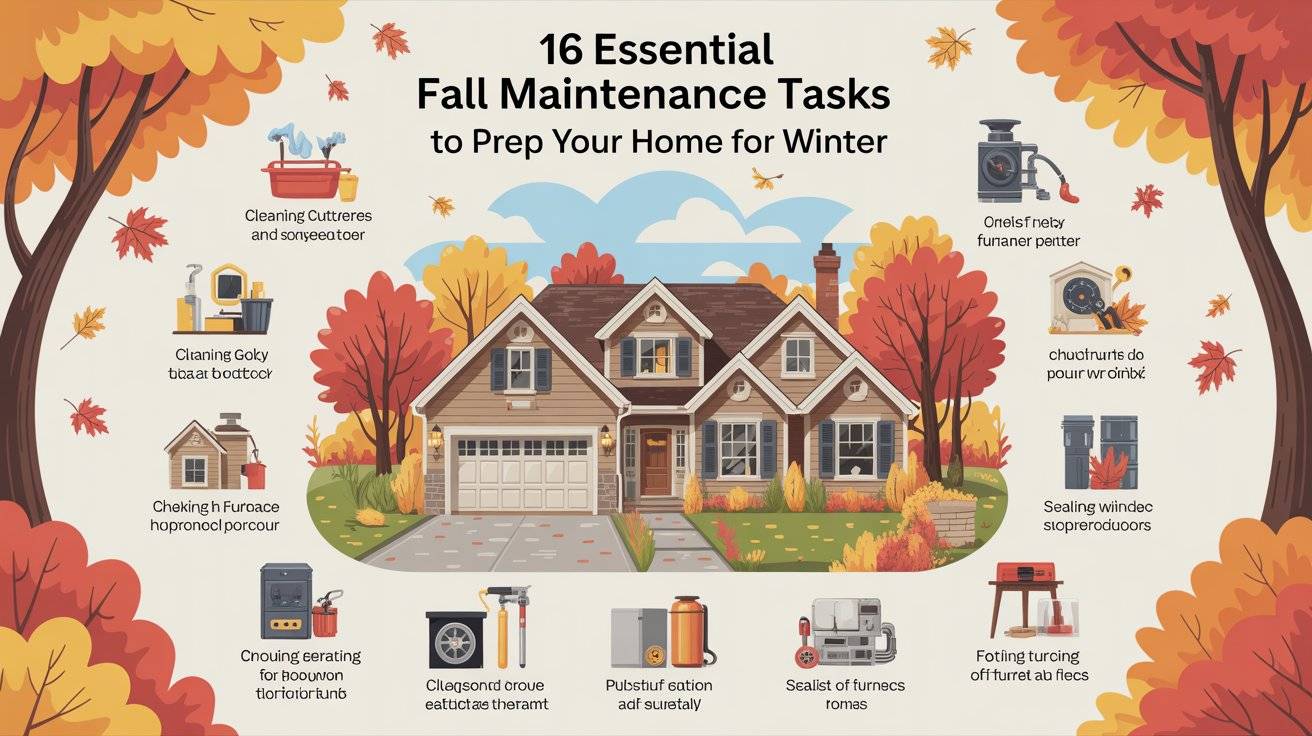Get Ready Before the Chill Hits
As the leaves start to fall and the air turns crisp, it’s the perfect reminder that winter isn’t far off. Fall is the ideal season to take care of home maintenance tasks that will help protect your home from cold temperatures, snow, and ice. Taking a weekend or two in the fall to get things in order can save you a lot of money and stress down the road.
Think of this time as your home’s check-up. You’re sealing up small issues before they become big problems. From making sure your heating system is working properly to protecting your pipes from freezing, every small step counts.
Whether you’re a first-time homeowner or a seasoned DIYer, this guide is packed with practical things you can do right now. The goal? Keep your home warm, safe, and energy-efficient all winter long.
Here’s a straightforward checklist of the most important fall home maintenance tasks, with easy-to-follow tips to help you get started.
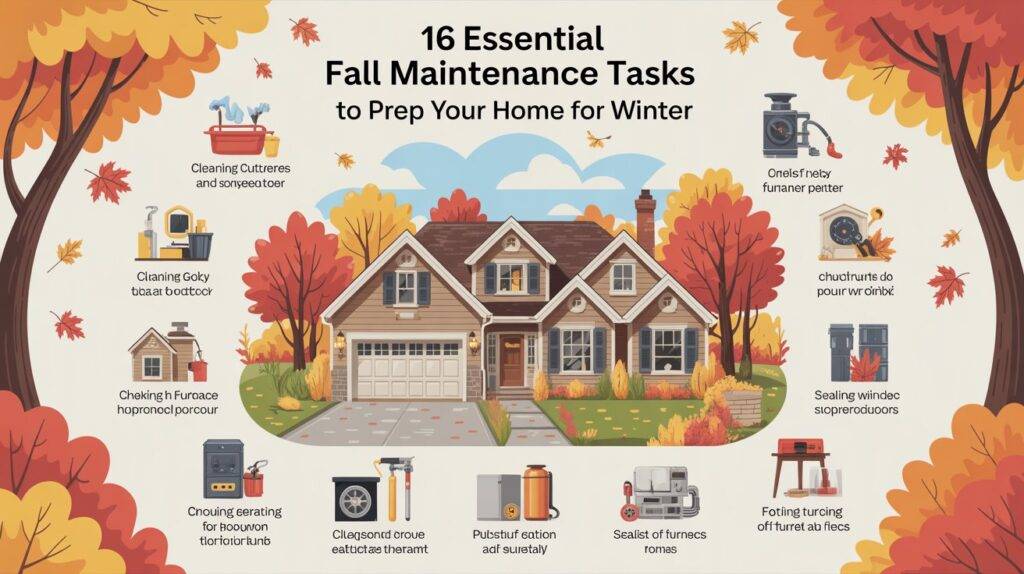
✅ 1. Clean Your Gutters and Downspouts
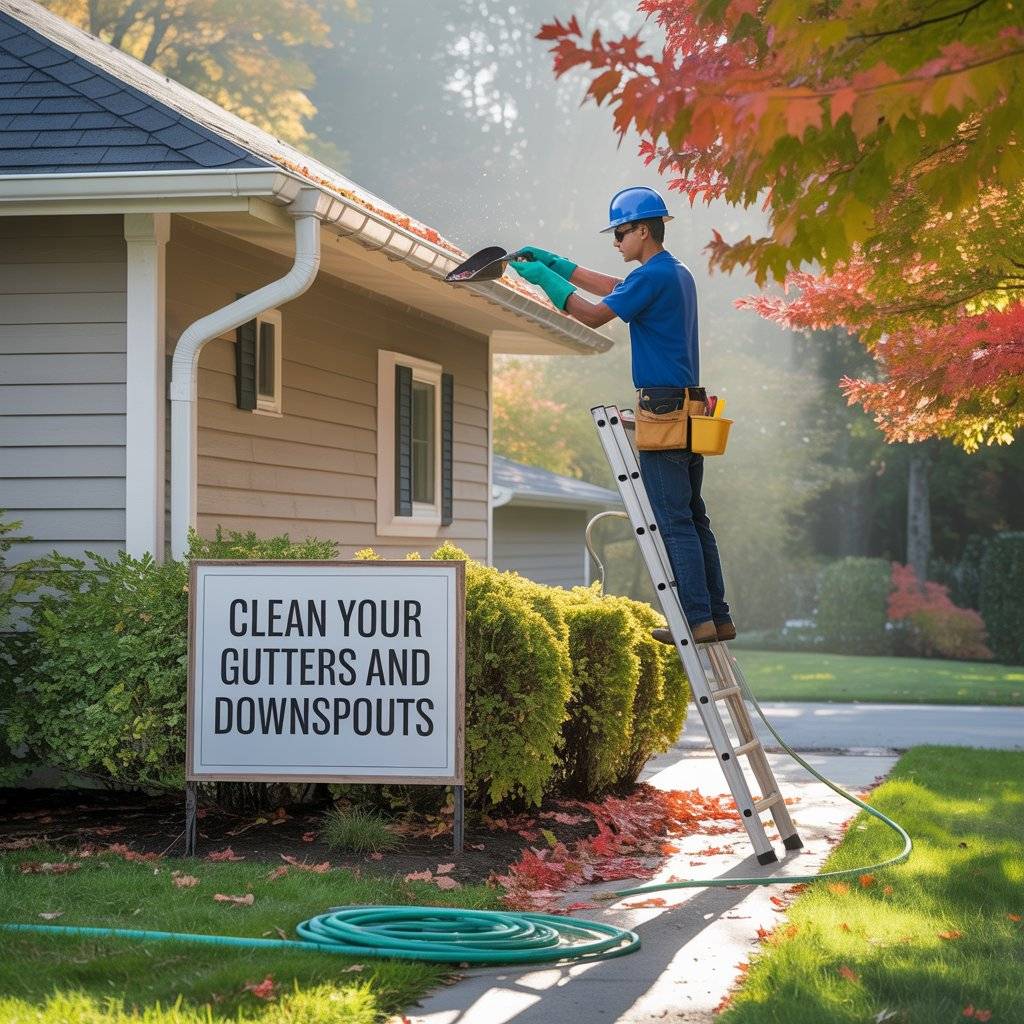

Falling leaves may be beautiful, but they’re not so great for your gutters. If they pile up, they can clog your downspouts, causing water to overflow. That water can then leak into your roof, siding, or foundation, which can lead to costly repairs.
Start by safely using a sturdy ladder to check your gutters. Wear gloves and scoop out any leaves, twigs, or debris. A garden hose is great for flushing out the gutters and making sure the water flows properly through the downspouts. While you’re at it, check for any loose brackets or signs of rust that may need fixing.
If your home is surrounded by trees, consider installing gutter guards. They’ll save you time and help prevent buildup in the future. And don’t forget to make sure your downspouts are pointing away from the foundation ideally 3 to 6 feet to protect your basement from water damage.
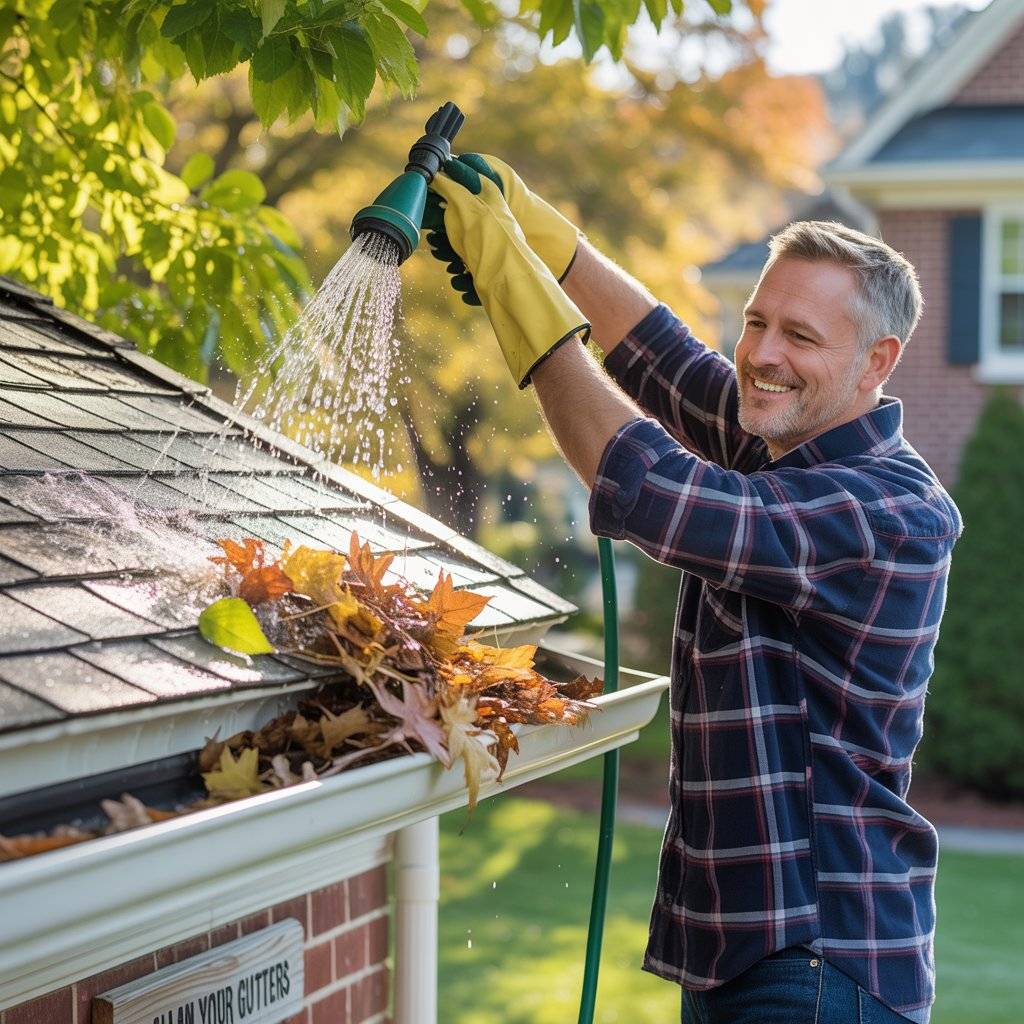
✅ 2. Inspect Your Roof for Damage
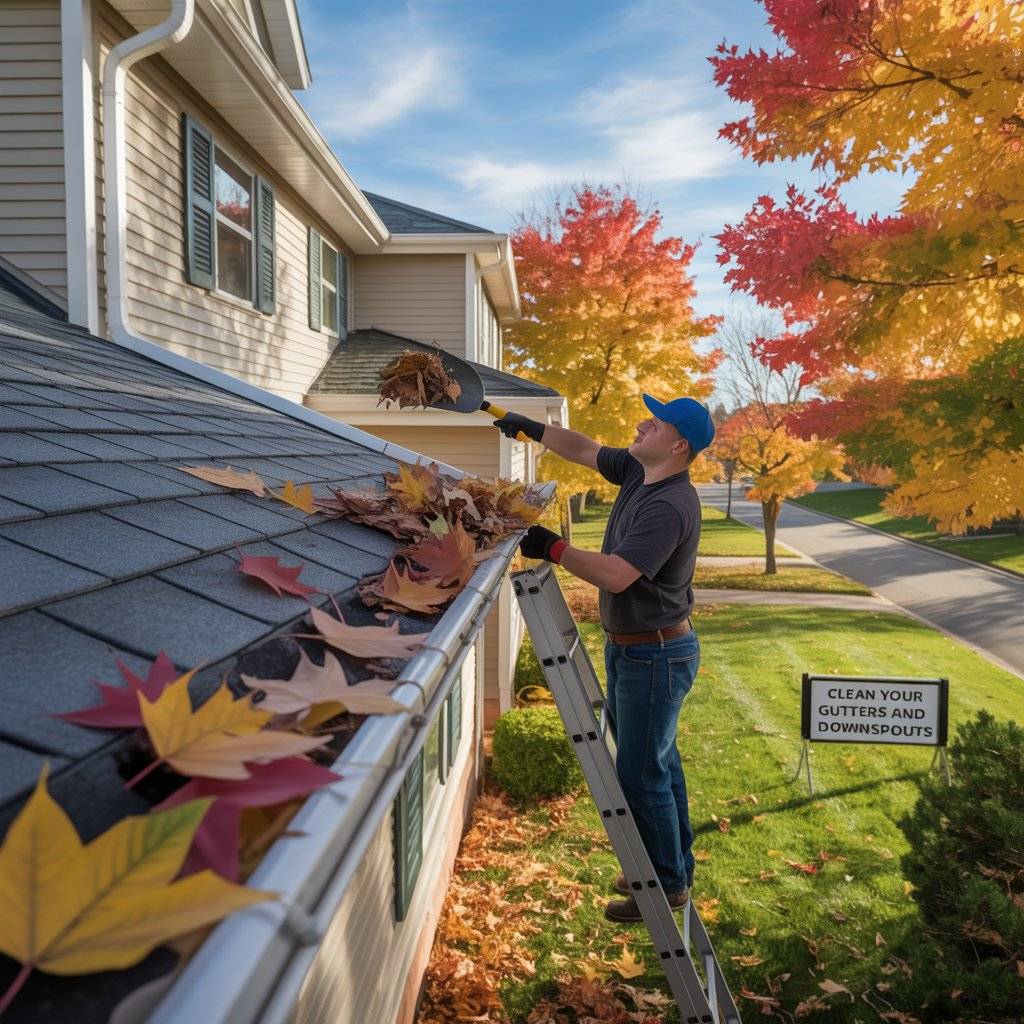
Your roof is the first line of defense against snow and ice, so now’s the time to give it a careful look. Missing or damaged shingles can let in water, which may freeze and expand, causing leaks and structural problems during the winter.
From the ground, use binoculars or zoom in with your phone to look for signs like curled, cracked, or missing shingles. Check for moss or dark patches these can mean moisture is being trapped. Also look for damaged flashing around vents and chimneys.
If you’re comfortable climbing onto the roof and know how to stay safe, you can get a closer look. But when in doubt, hire a professional roofer to inspect it for you. Spending a little now to catch small issues could save you thousands on roof repairs later in the season.

✅ 3. Seal Gaps and Cracks Around Windows and Doors

Cold air creeping in around your windows and doors isn’t just uncomfortable it’s also expensive. Gaps and cracks let warm air escape and let chilly air in, forcing your heating system to work harder and raising your energy bills.
To fix it, do a simple inspection. Hold your hand near window and door frames if you feel cold air, you’ve got a leak. Another trick: light a candle and move it around the frame. If the flame flickers, you likely have a draft.
Seal gaps with weatherstripping or caulk, depending on the size of the opening. Foam tape works well for window sashes, and door sweeps help seal gaps under doors. Not only will this keep your house warmer, but it also helps block out dust and pests.
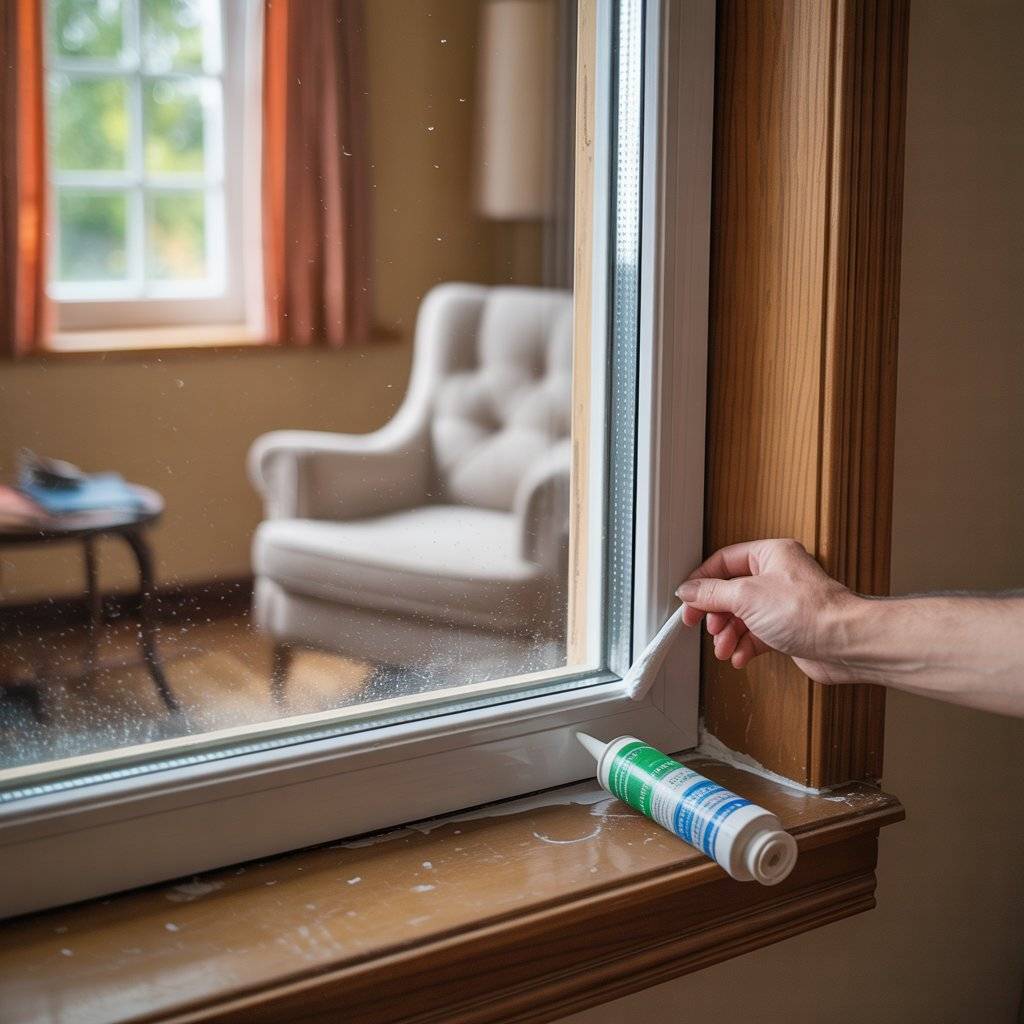
✅ 4. Schedule a Furnace Inspection or Tune-Up


Before your furnace becomes your home’s best friend this winter, make sure it’s ready to go. An annual inspection helps ensure everything runs safely and efficiently, and it can extend the life of your heating system.
Call a certified HVAC technician to check for carbon monoxide leaks, clean the burners, inspect the heat exchanger, and replace dirty filters. If your filter looks dusty, you can change it yourself in the meantime most should be replaced every 1–3 months during heating season.
If your furnace is older, a tune-up can help catch small problems before they turn into major repairs. And if you’ve been thinking about upgrading to a more energy-efficient model, fall is the perfect time to shop around before winter demand picks up.


✅ 5. Drain and Store Garden Hoses
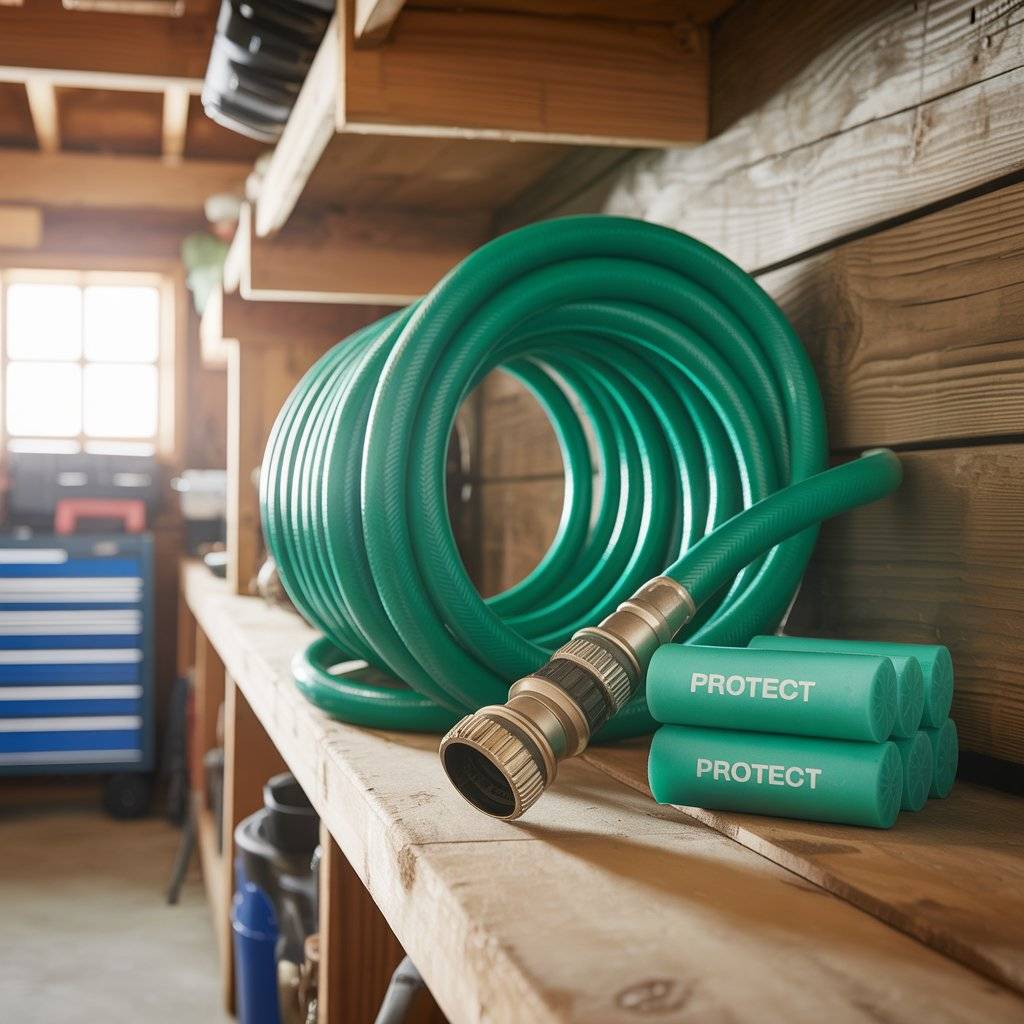

Leaving hoses connected during freezing weather can cause water to freeze inside, which can damage your outdoor spigots or even lead to burst pipes.
Start by turning off the water supply to your outdoor faucets if you have a shut-off valve. Then disconnect the hose, drain it completely, and store it in a shed or garage. For extra protection, you can install foam faucet covers on outdoor spigots.
If you use a sprinkler system, don’t forget to have it winterized too. A professional can blow out the water using compressed air, which helps prevent cracks and leaks when the temperature drops.

✅ 6. Check Your Fireplace and Chimney
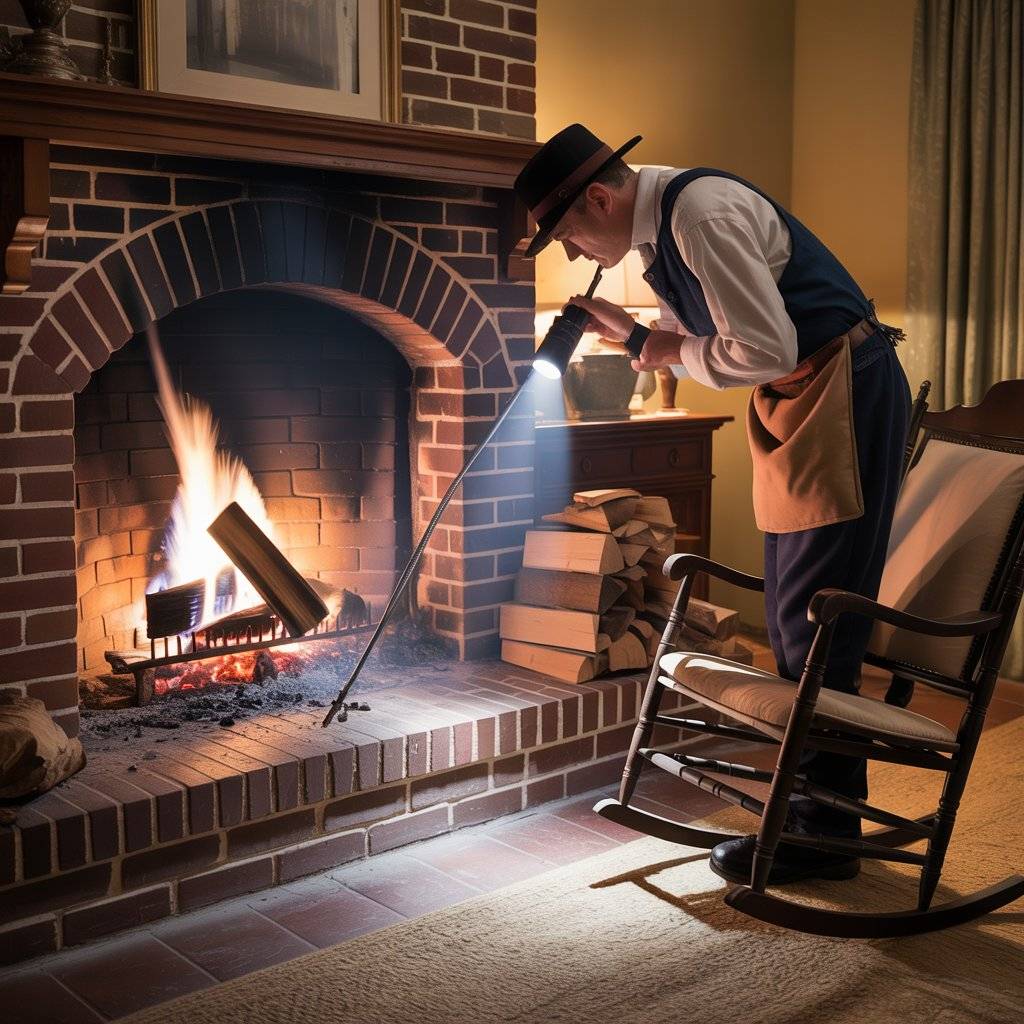
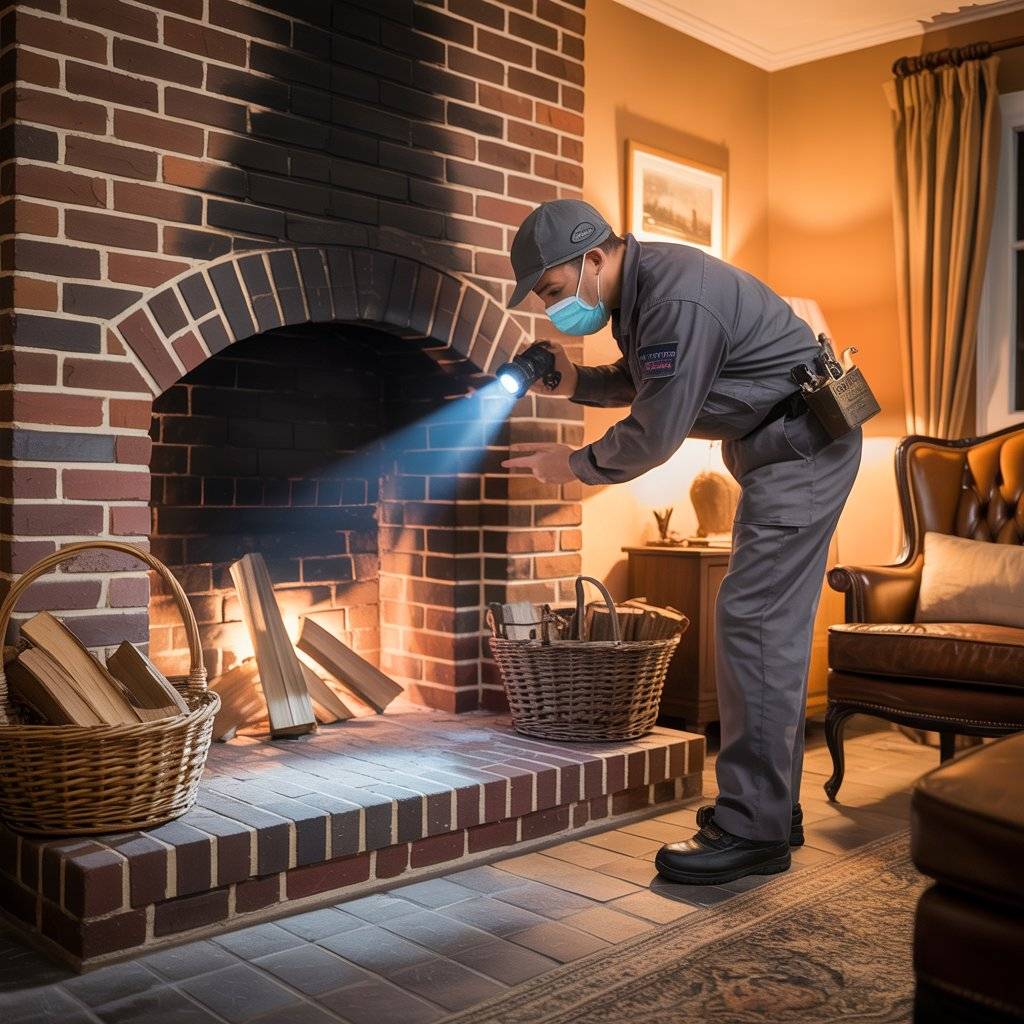
Planning to cozy up by the fire this winter? Make sure your fireplace is safe and ready to use. Over time, creosote (a sticky, flammable buildup) can collect in chimneys and pose a serious fire hazard.
Hire a certified chimney sweep to inspect and clean the chimney. They’ll also check for cracks, blockages, and signs of animals nesting inside. If you have a gas fireplace, it should be inspected annually as well.
Also, take a look at the damper to ensure it opens and closes properly. Stock up on dry firewood, and if you burn wood regularly, consider installing a chimney cap to keep rain and animals out.
Related Post: Spring Home Maintenance Checklists Tasks to Do Now

✅ 7. Reverse Your Ceiling Fans

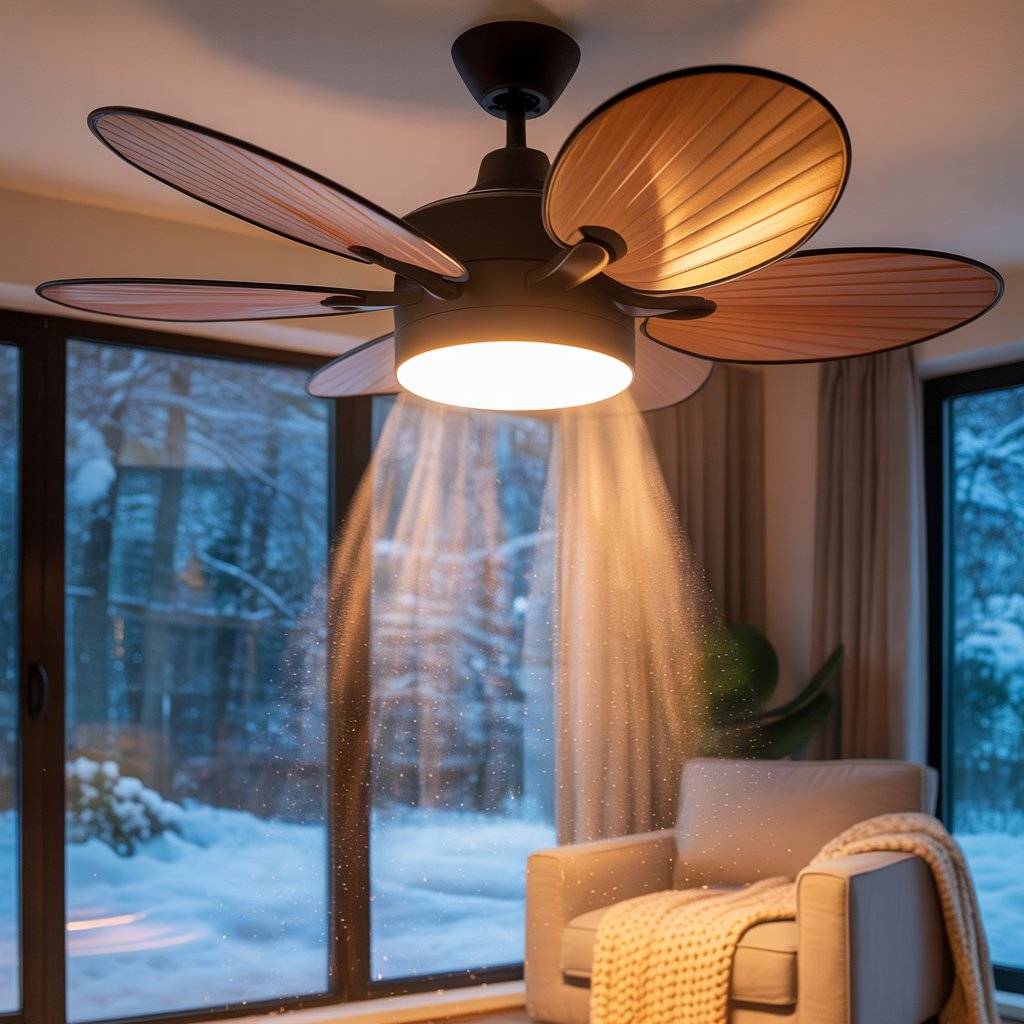
Ceiling fans aren’t just for summer. In the colder months, they can actually help warm your space if they’re spinning in the right direction. When a fan rotates clockwise at a low speed, it pushes warm air (which rises to the ceiling) back down into the room.
To reverse your fan, first turn it off and wait for the blades to stop spinning. Look for a small switch on the fan’s base or remote. Flip it to reverse the direction. Then, run the fan on the lowest setting.
This small change can make your home feel warmer and more comfortable, especially in rooms with high ceilings. It can also help reduce your heating costs, since you may not need to turn the thermostat up as high. Just remember to switch it back in the spring!
Related Post: Spring Home Maintenance Checklists Tasks to Do Now

✅ 8. Trim Trees and Remove Dead Branches
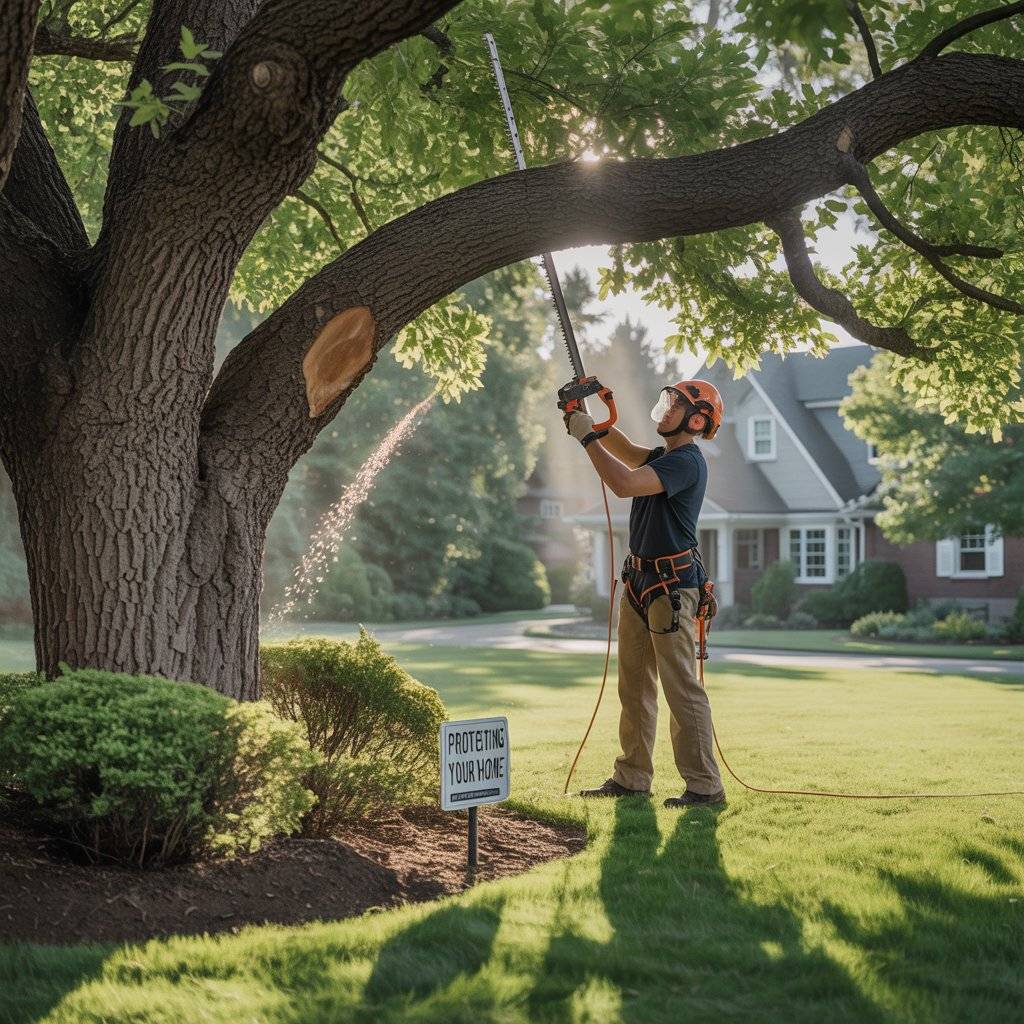
Winter storms and heavy snow can easily break weak tree limbs, especially those hanging over your roof, car, or power lines. Trimming trees in the fall is a smart way to prevent damage and keep your home safe when bad weather hits.
Start by inspecting the trees around your property. Look for branches that are dead, cracked, or leaning too close to your house. If they seem unstable or heavy with leaves, it’s time for a trim. Use sharp pruning shears or a pole saw for smaller branches.
For large trees or limbs near wires, it’s best to hire a professional arborist. They have the tools and experience to handle the job safely. Cleaning up dead branches now also makes your yard look neater and helps your trees grow healthier in the spring.
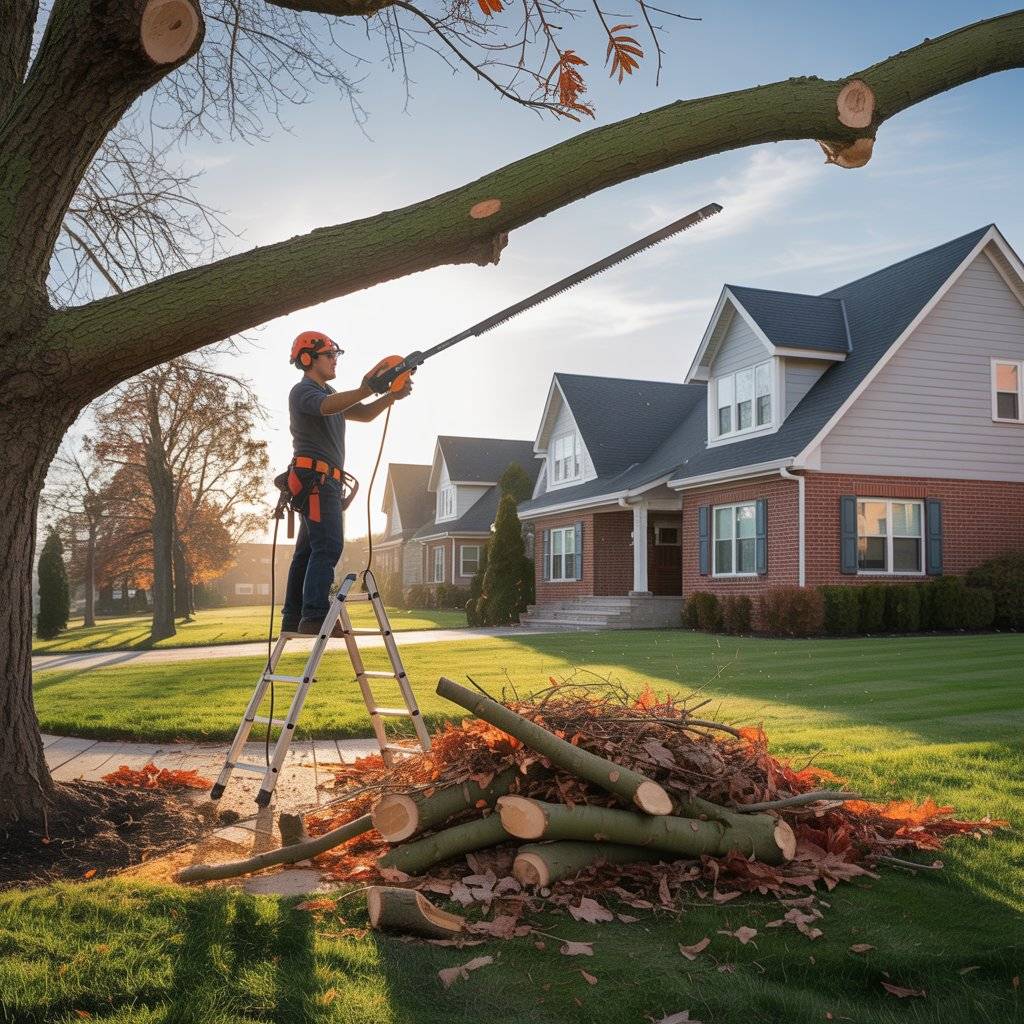
✅ 9. Test Your Smoke and Carbon Monoxide Detectors

As we spend more time indoors with heaters and fireplaces running, the risk of house fires and carbon monoxide leaks increases. That’s why fall is a critical time to make sure your smoke and carbon monoxide detectors are working properly.
Go through your home and press the test button on each device. If the alarm doesn’t sound, try replacing the batteries. Experts recommend replacing batteries at least once a year, and replacing the entire detector every 8–10 years.
If your home doesn’t have carbon monoxide detectors, now’s the time to install them is now especially near bedrooms and gas appliances. Carbon monoxide is odorless and invisible, but extremely dangerous. Having working alarms could save your life.

✅ 10. Insulate Exposed Pipes
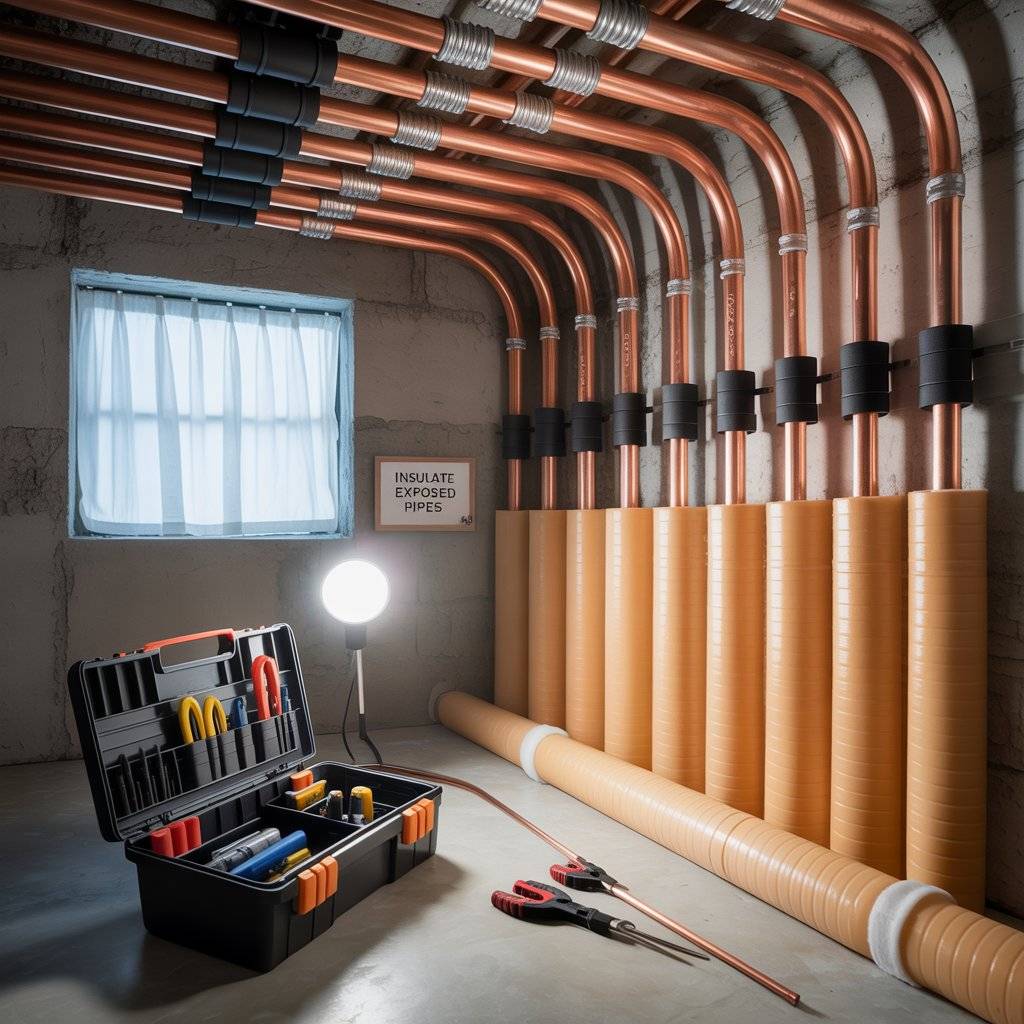
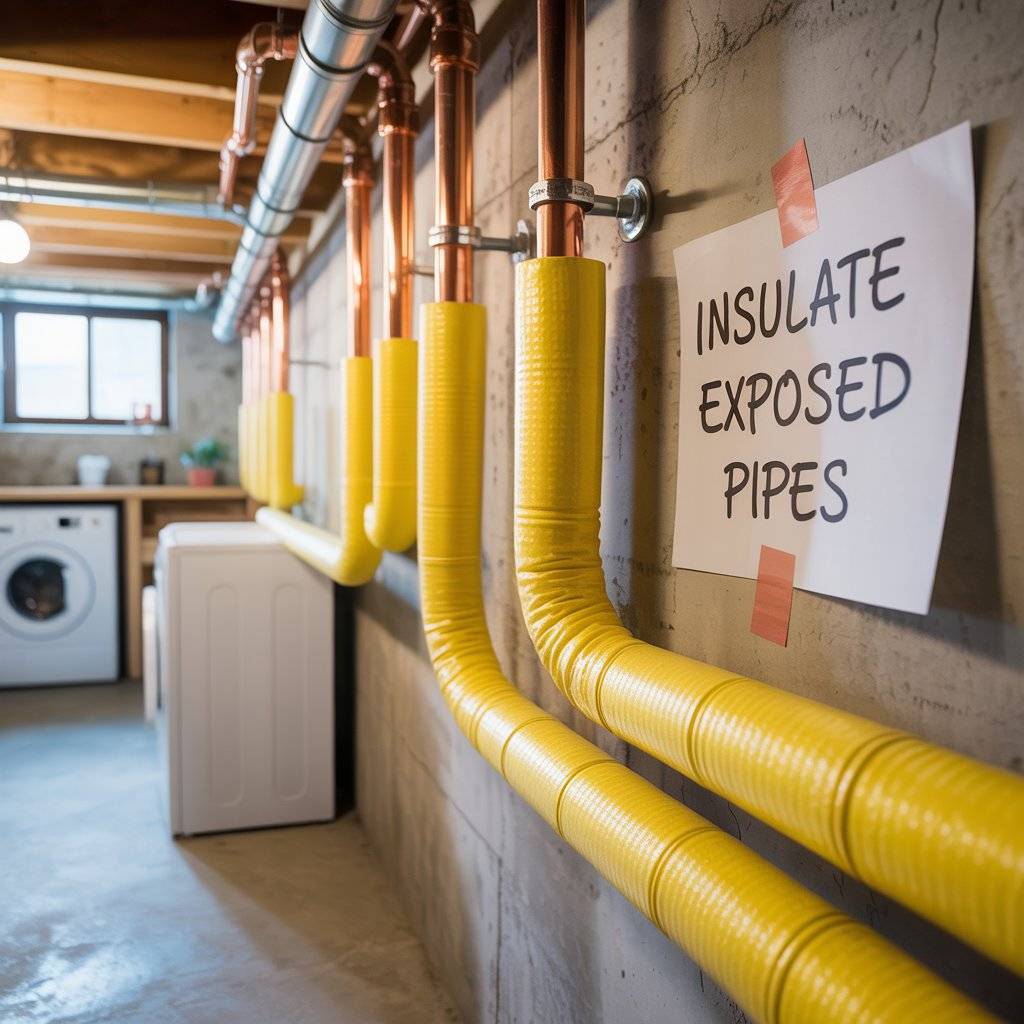
Frozen pipes are one of the most common (and expensive) winter headaches. When water inside a pipe freezes, it expands and can cause the pipe to burst flooding your home and leading to major water damage.
To prevent this, insulate any exposed pipes, especially those in unheated spaces like garages, basements, attics, or crawl spaces. You can use foam pipe sleeves, heat tape, or even old towels wrapped with zip ties in a pinch.
Don’t forget to check under sinks along exterior walls too. On especially cold nights, you can open cabinet doors to let warm air circulate. Taking these simple steps now can help you avoid a costly mess later.

✅ 11. Clean and Store Outdoor Furniture

Once the warm days are behind you, it’s time to prep your patio or balcony for winter. Leaving outdoor furniture exposed to rain, snow, and frost can cause fading, rust, and damage cutting down its lifespan.
Start by giving each piece a good clean. Use warm soapy water and a sponge or brush to remove dirt, grime, or mildew. Rinse everything thoroughly and let it dry completely. For wood furniture, you can apply a protective oil or sealant to keep it from cracking.
Store the furniture in a shed, garage, or under a heavy-duty waterproof cover. Stack cushions indoors or in a storage bin to prevent mold and fading. If you have a grill, cover it up or bring it inside if possible. Taking care of your outdoor space now will make spring setup a breeze.

✅ 12. Check Your Weather Stripping
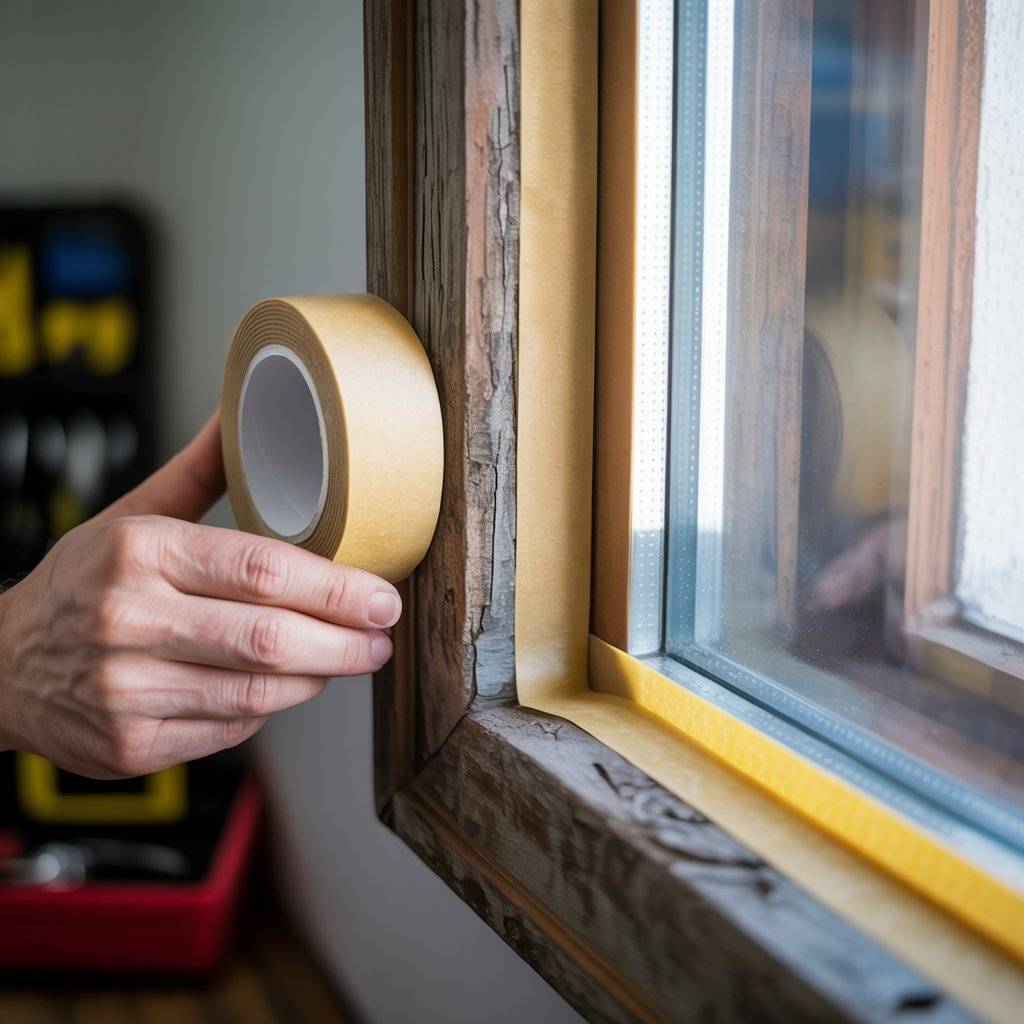
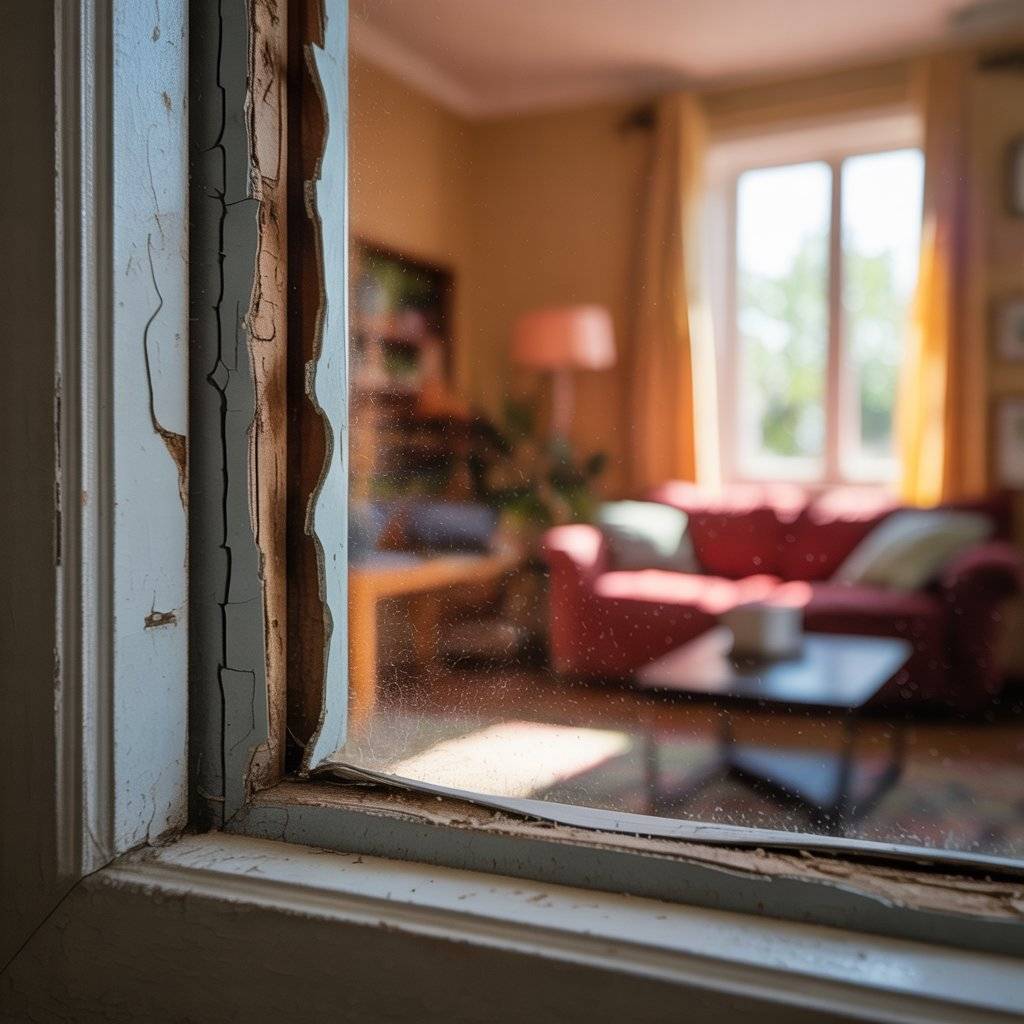
Weather stripping is one of those small details that makes a big difference in keeping your home warm and energy-efficient. Over time, it can crack, peel, or wear out letting cold air sneak in through doors and windows.
Do a full walk-through of your home, especially near exterior doors and old windows. Look for brittle rubber, gaps, or sections that don’t seal tightly. You might also notice a draft or higher heating bills if the sealing is worn out.
You can replace weather stripping with adhesive-backed foam tape or vinyl kits from the hardware store. It’s affordable and easy to install. Be sure to clean the surface first so it sticks properly. Replacing old weather stripping is a fast and low-cost way to stay cozy all winter.

✅ 13. Service Your Snow Blower and Shovels
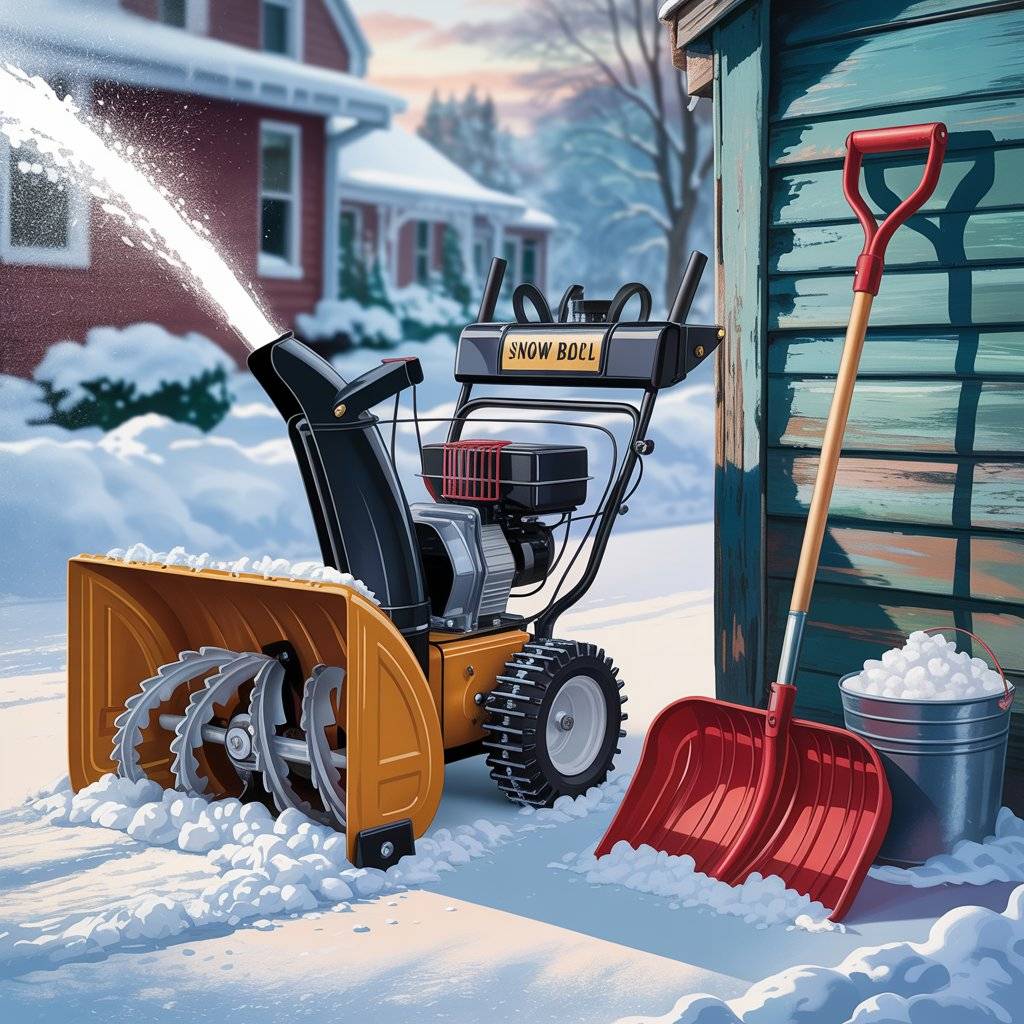
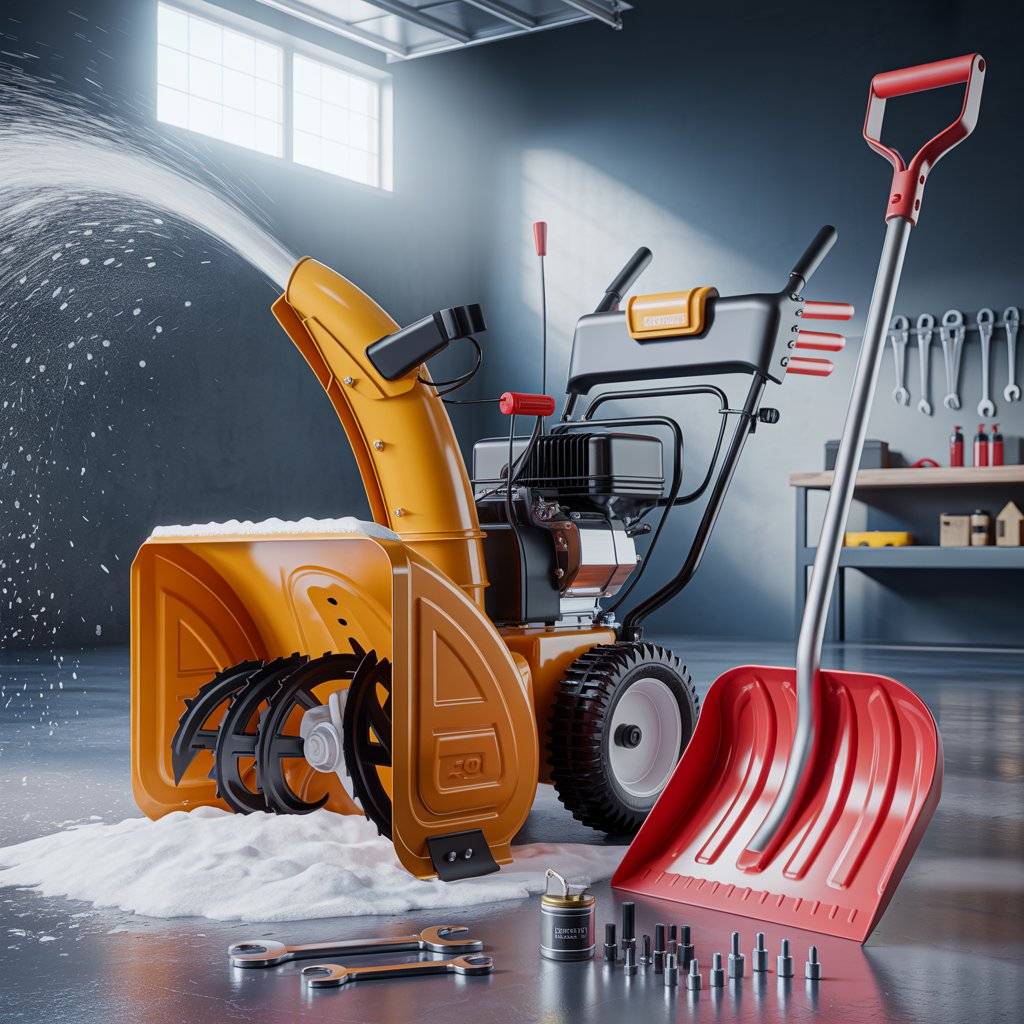
Don’t wait until the first snowstorm to find out your snow blower isn’t working. Fall is the perfect time to check and service all your winter gear so you’re not caught off guard.
For snow blowers, inspect the spark plug, check the oil level, and make sure the fuel is fresh. Start it up to confirm it runs smoothly. If it struggles to start or makes strange noises, consider taking it in for professional servicing.
Also inspect your snow shovels for cracks or worn edges. If you live in an area with frequent snow, a sturdy ergonomic shovel can make a big difference. Stock up on de-icer or ice melt now, so you’re prepared before stores sell out. Planning ahead makes snow removal easier and safer.
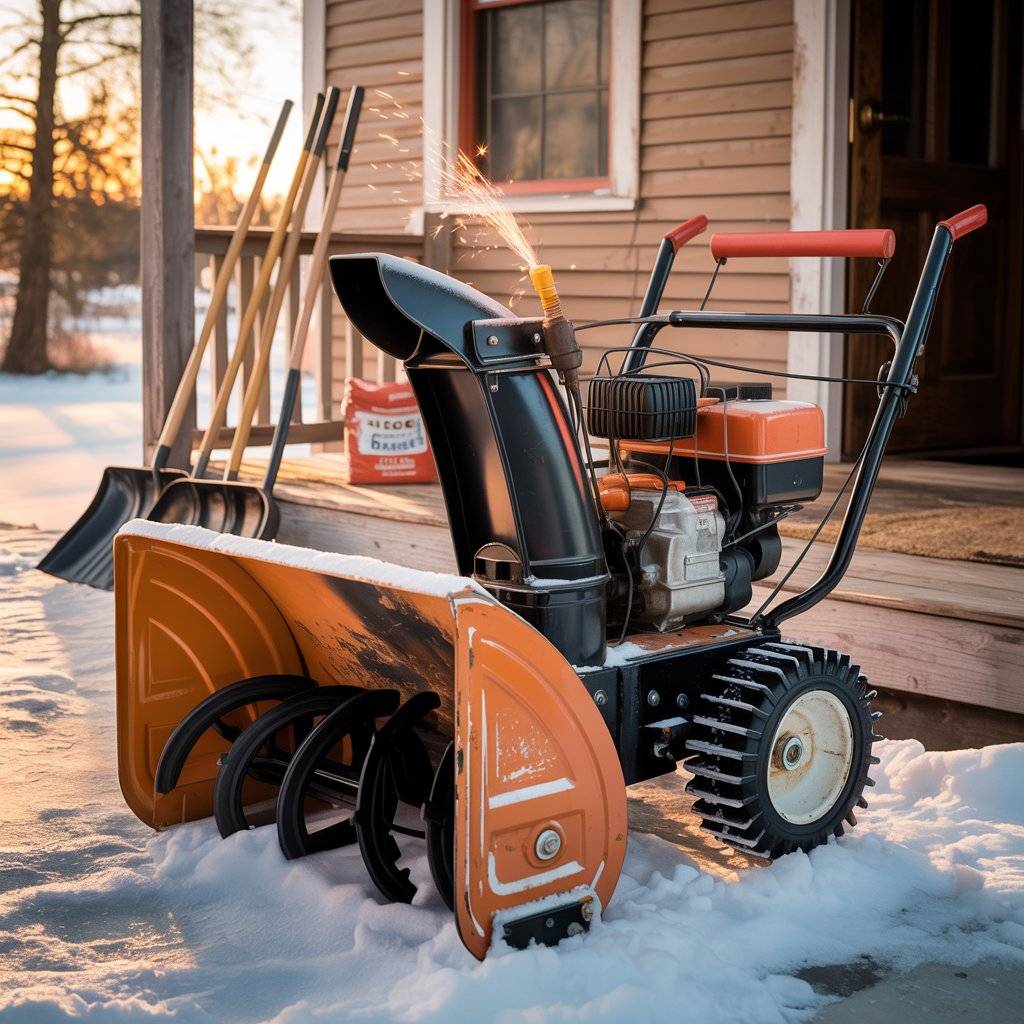
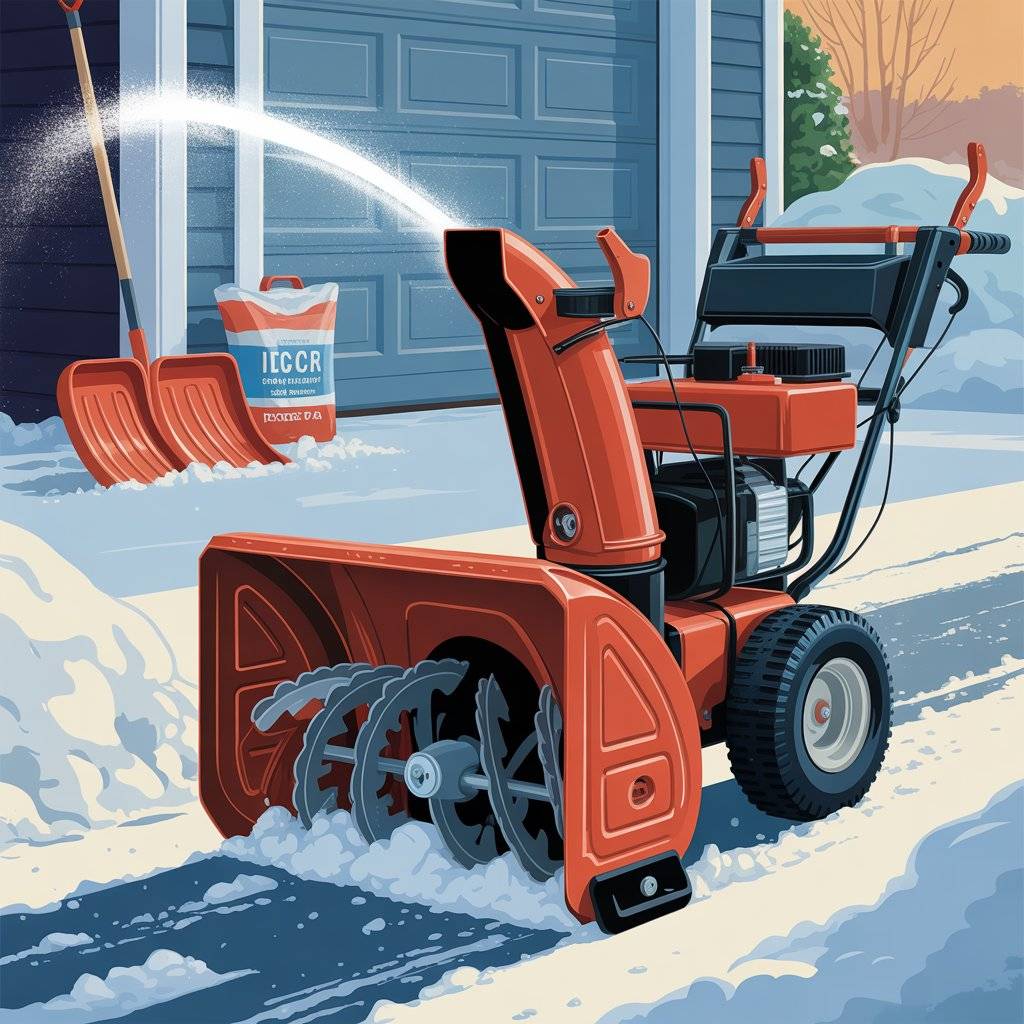
✅ 14. Inspect and Clean Dryer Vents
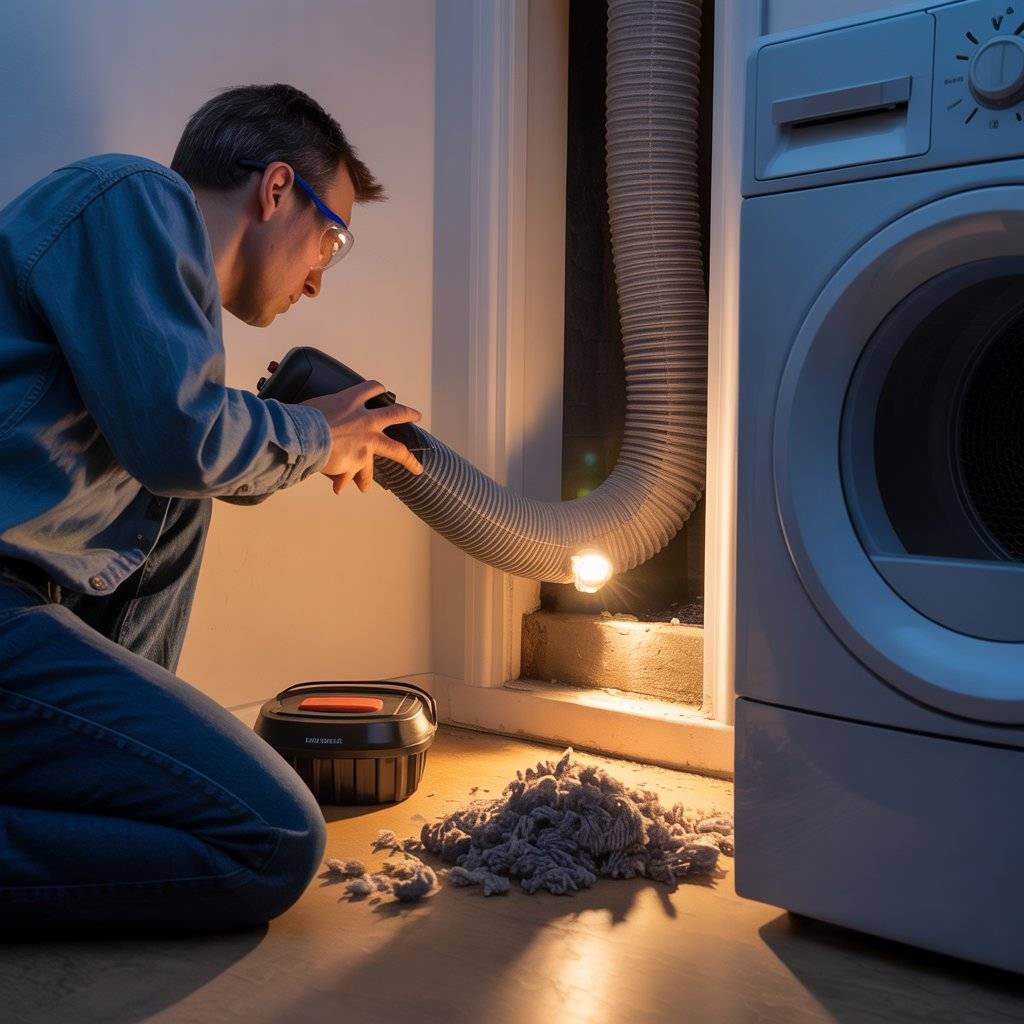
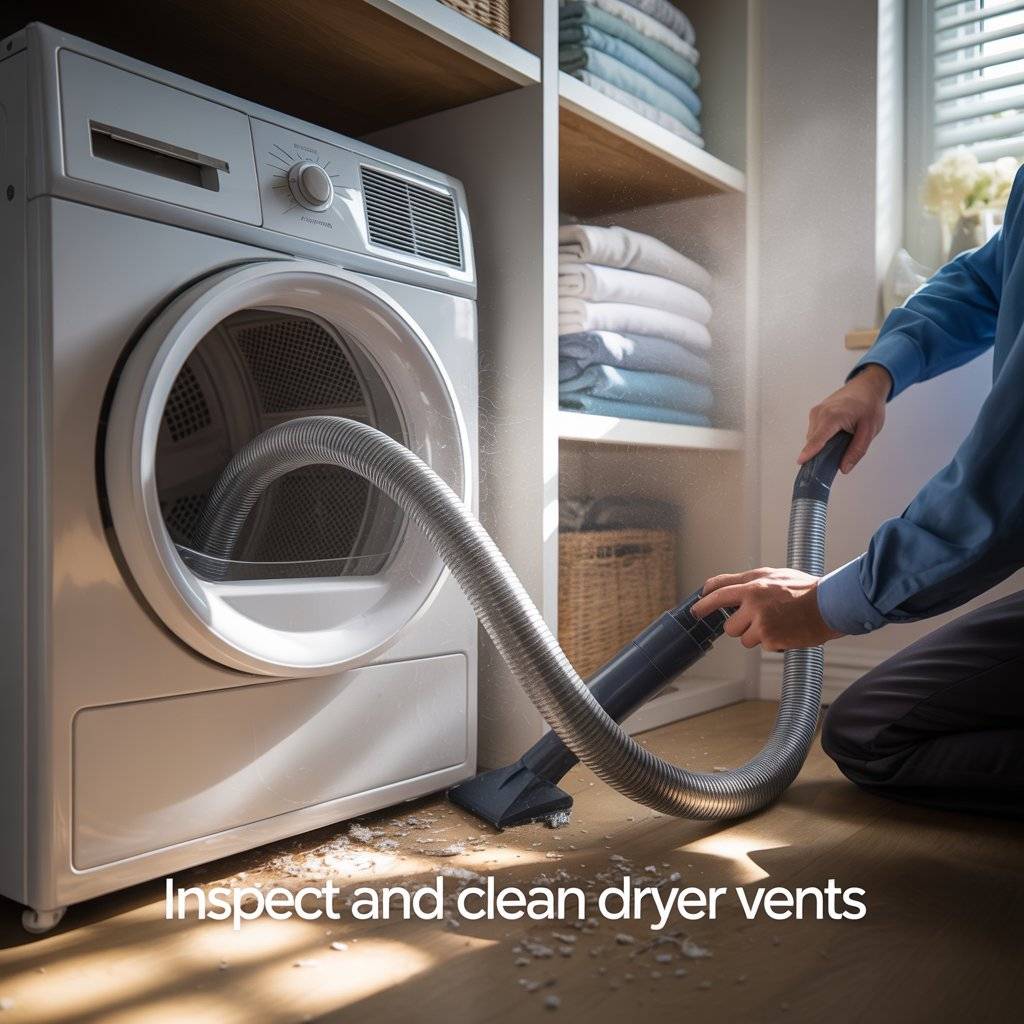
Your dryer vent can be a hidden fire hazard if it gets clogged with lint. During the colder months, laundry tends to pile up, which means your dryer will work harder and that buildup can become a problem if you don’t clean it out.
Unplug your dryer and pull it away from the wall. Detach the vent hose and vacuum out any lint inside. You can also use a dryer vent cleaning kit with a flexible brush to reach deeper into the duct. Don’t forget to check the vent cap outside to make sure it opens freely and isn’t blocked by leaves or nests.
Doing this at least once a year improves dryer efficiency, reduces energy use, and keeps your home safer. A clean vent also means faster drying times, which is a win during the colder laundry-heavy months.

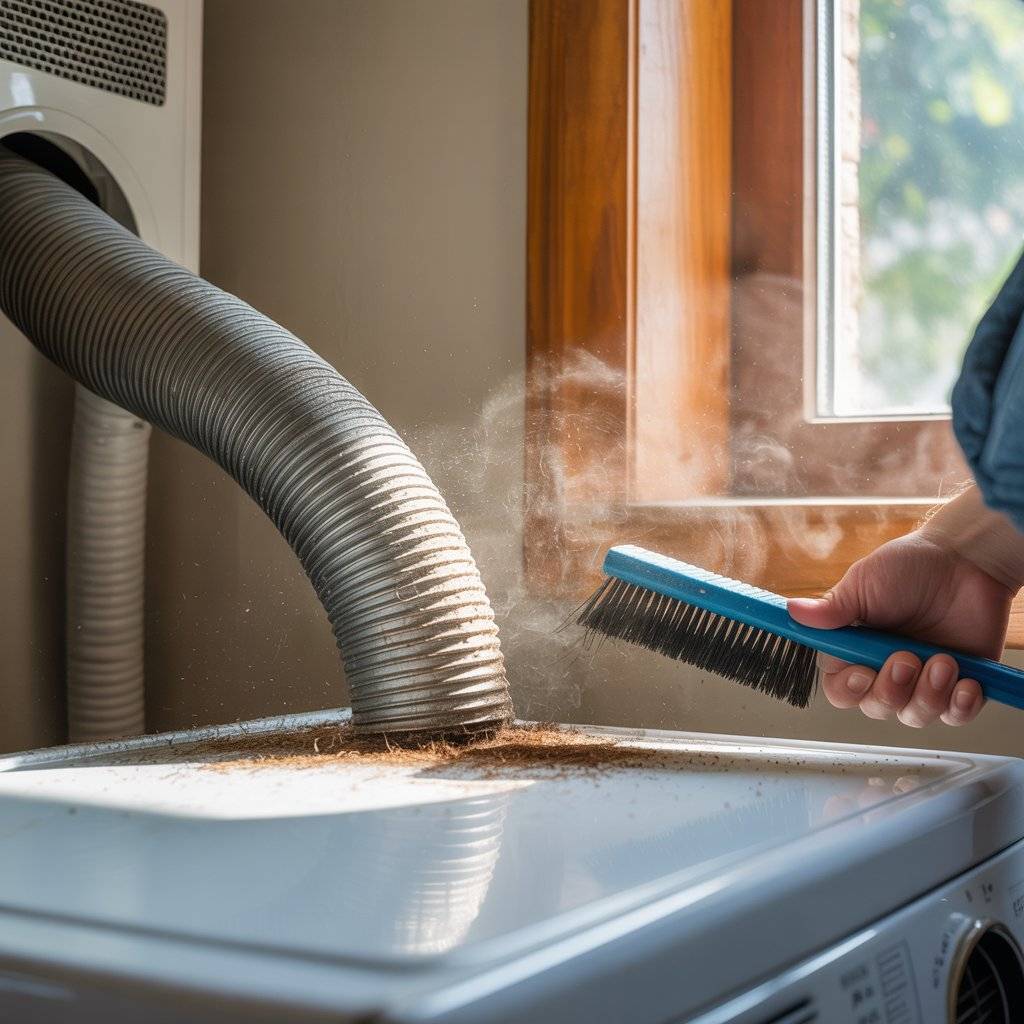
✅ 15. Protect Your Entryways from Mud and Salt
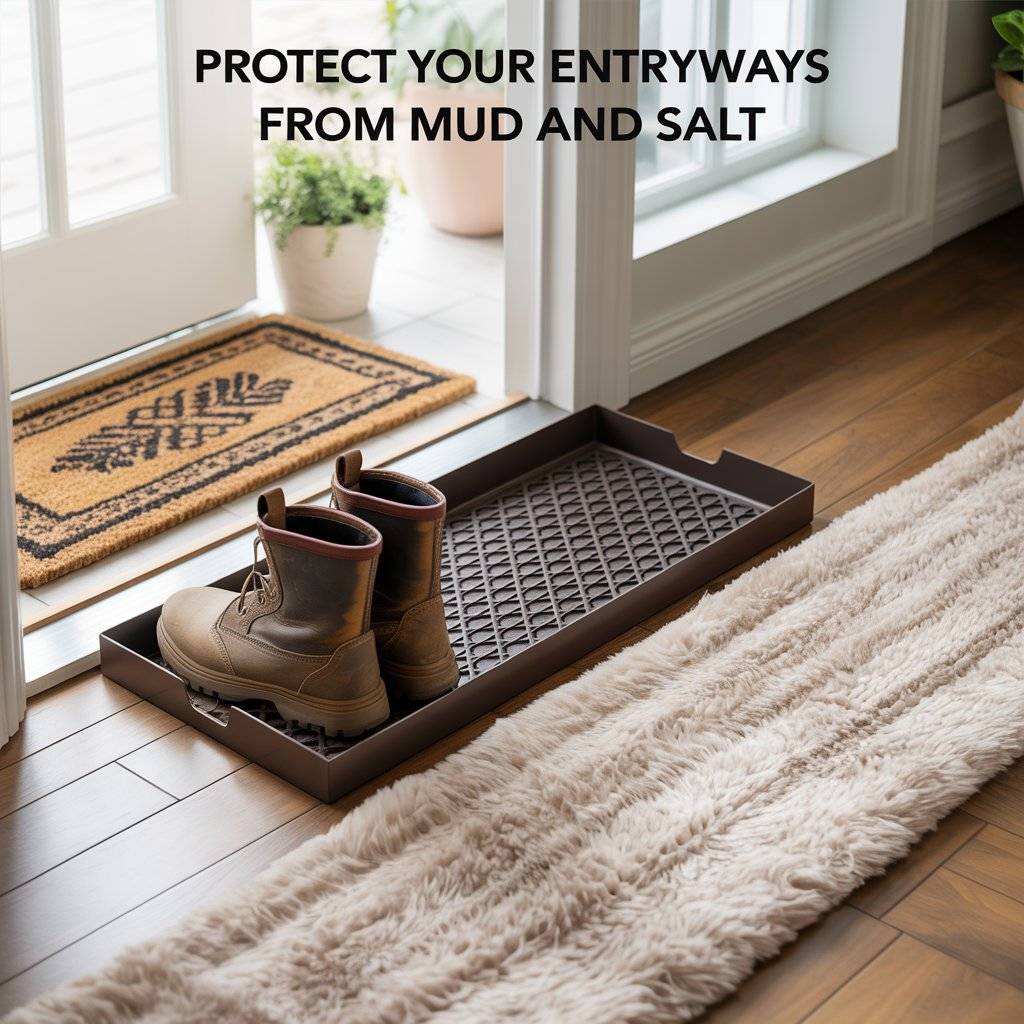
Winter weather means wet boots, muddy paws, and road salt all of which can quickly mess up your floors and entryways. Prepping your home now helps you keep things clean and avoid damage.
Place heavy-duty doormats both outside and inside every entrance. The outdoor mat should scrape off debris, while the indoor one absorbs moisture. You can also add a boot tray to catch melting snow and slush.
Consider putting down a washable runner rug in high-traffic areas to protect your floors. If you live where salt is used on sidewalks, make sure to clean your shoes before stepping inside salt can stain or corrode tile, wood, and carpet. Simple steps like these keep your home cleaner and cut down on winter cleanup.
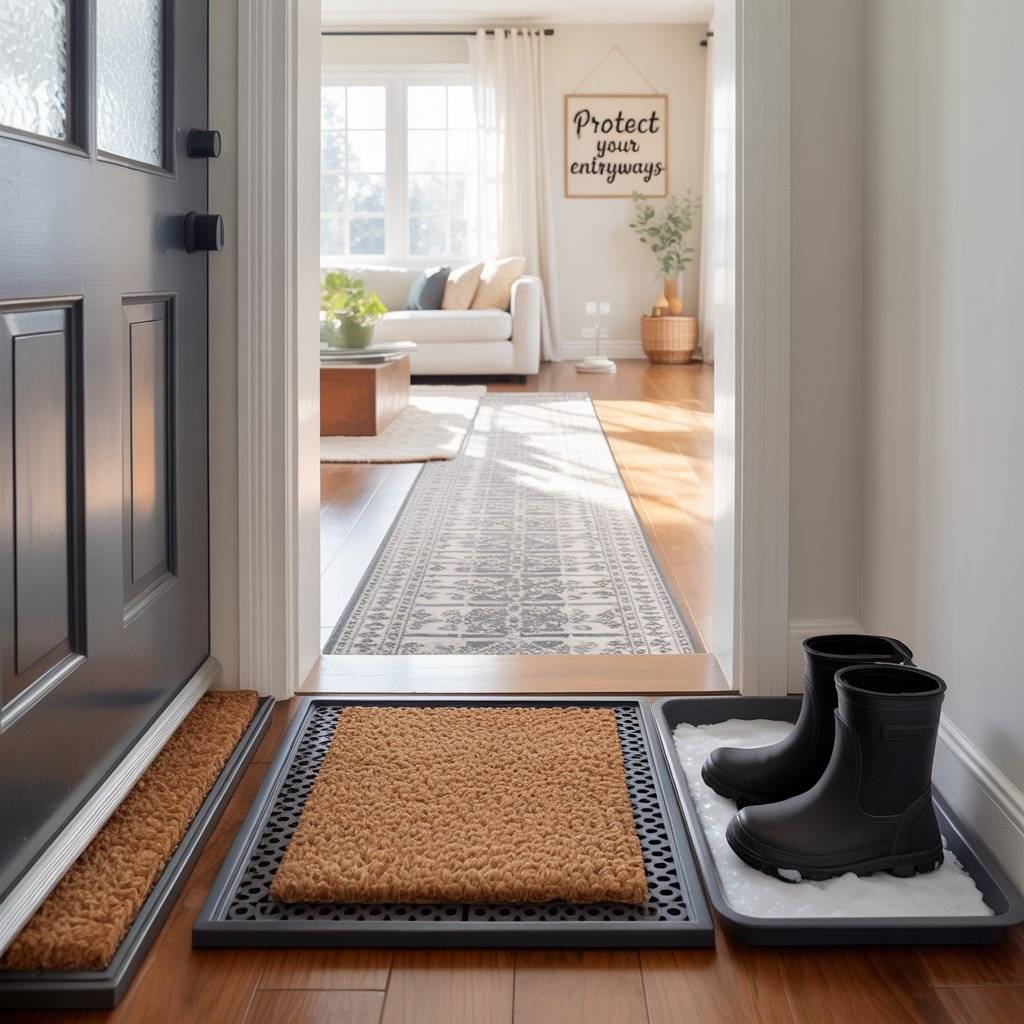
✅ 16. Prep Emergency Supplies
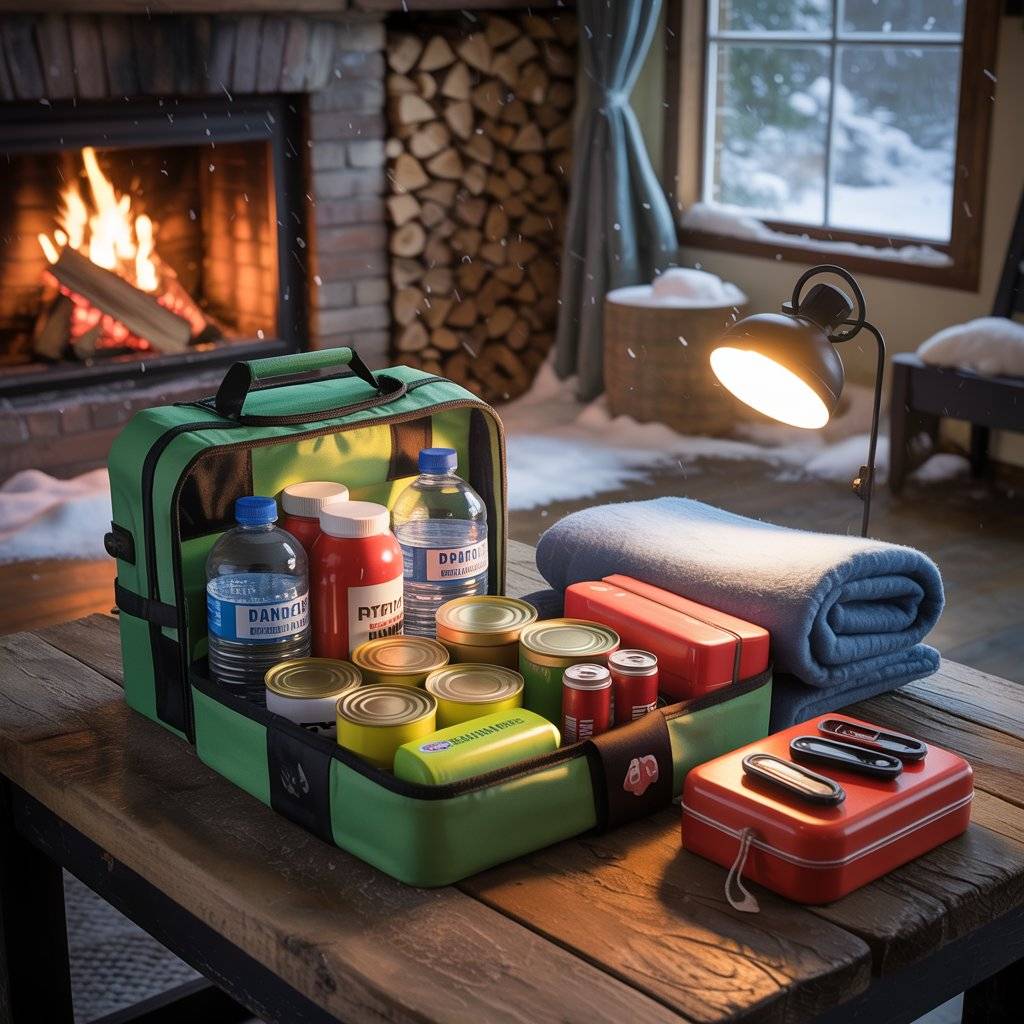
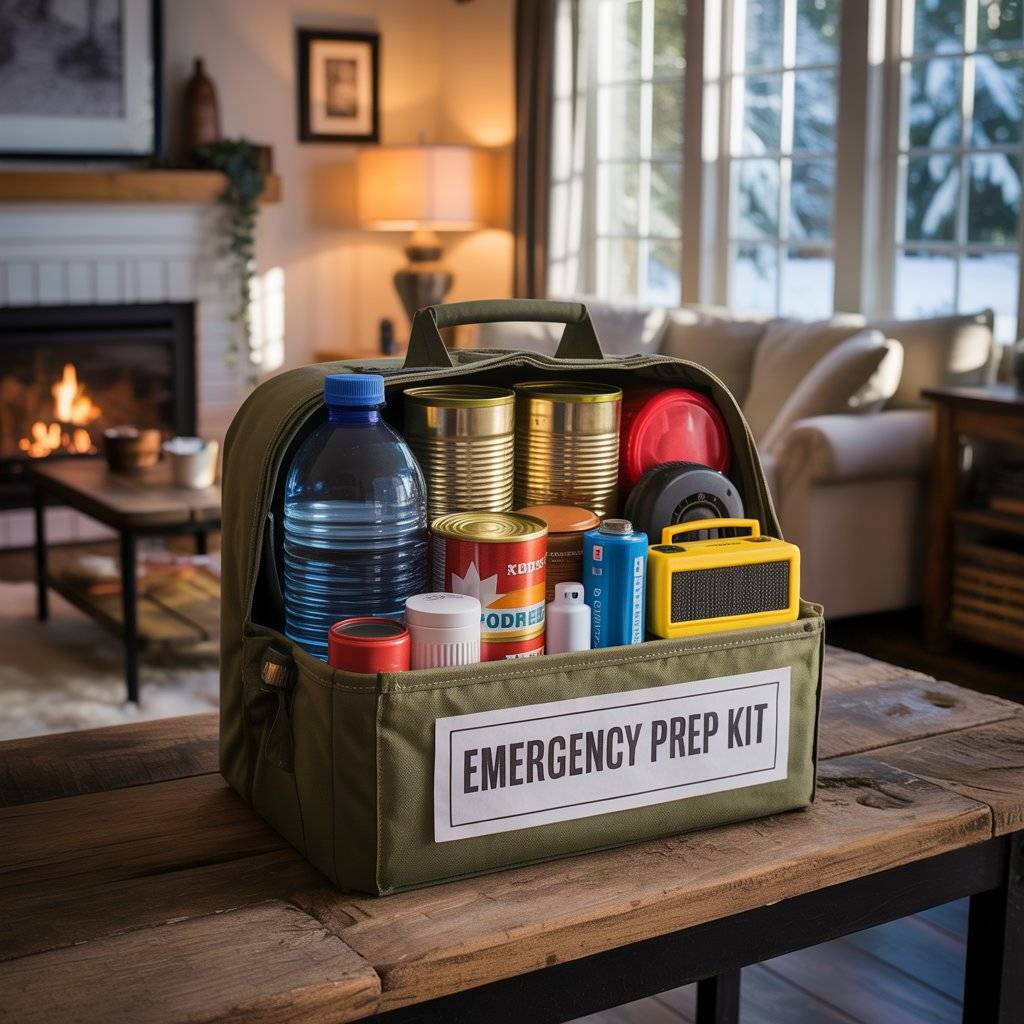
Winter storms can lead to power outages, icy roads, or even getting stuck at home for a few days. Having an emergency kit ready gives you peace of mind and keeps you safe if the unexpected happens.
Your home emergency kit should include bottled water, non-perishable food, flashlights, extra batteries, blankets, a first-aid kit, and a battery-powered radio. If you have a fireplace or wood stove, make sure you have dry firewood. If you rely on electric heat, consider buying a portable heater that’s safe for indoor use and runs on backup power.
Also, keep a smaller car kit with jumper cables, a flashlight, an ice scraper, and a small shovel. Don’t forget to refill any medications and check that your phone charger works with a power bank. Being ready now helps you avoid scrambling later when supplies may be harder to find.
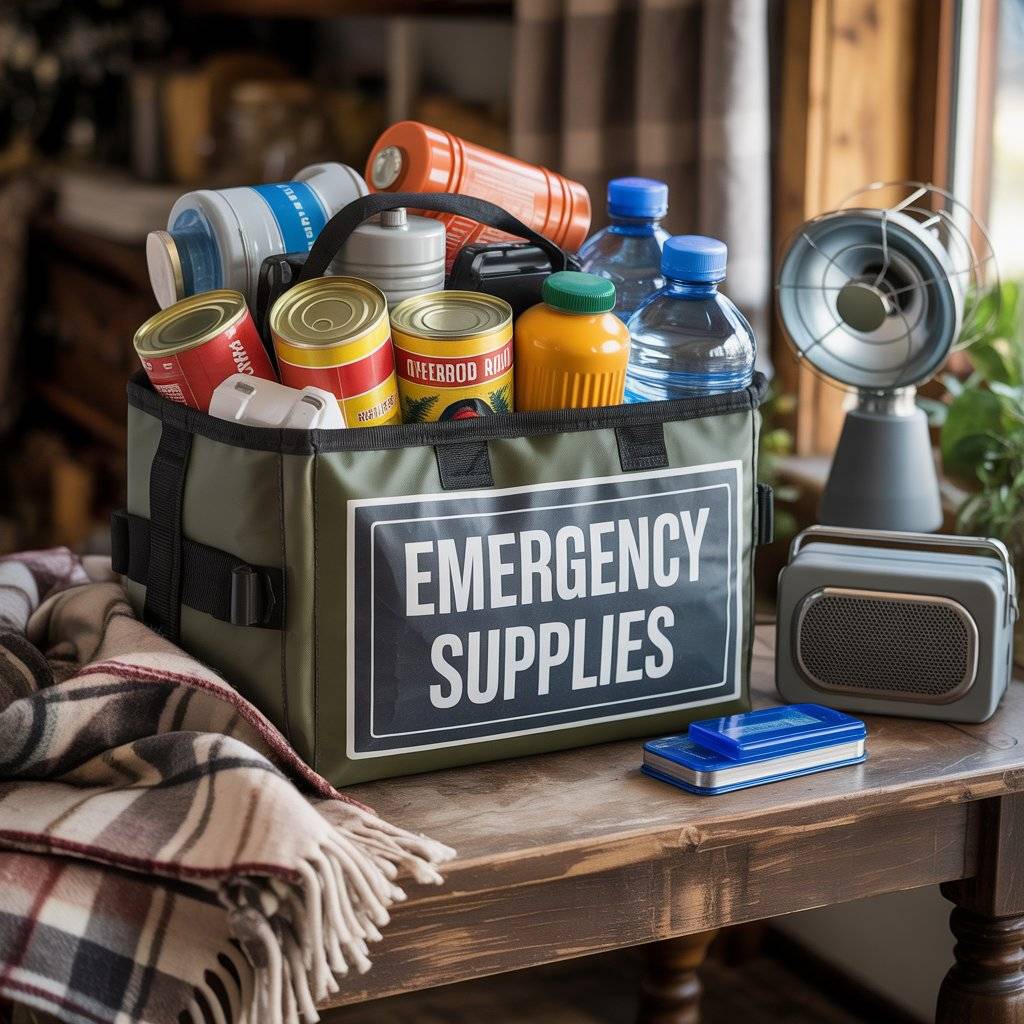
AFQ
🔧 1: When should I start my fall home maintenance?
Ideally, you should start your fall maintenance in early to mid-autumn, around late September to early October before the first frost hits. Starting early gives you enough time to complete bigger tasks like roof repairs or chimney cleaning while the weather is still manageable.
Plus, service providers like HVAC pros and chimney sweeps get busier as winter gets closer, so the earlier you schedule, the better your chances of getting an appointment on time.
🧰 2: How do I create a fall maintenance plan that works?
Begin by printing or saving a checklist of essential tasks, like the ones in this article. Walk around your home, both inside and out, and make notes on what needs attention.
Break it down into weekly or weekend tasks so you don’t feel overwhelmed. Tackle outdoor work first, since weather can change quickly. Prioritize safety items like smoke detector checks, furnace inspections, and roof repairs early in the season.
🏡 3: What are the most important tasks I shouldn’t skip?
If you’re short on time, focus on gutter cleaning, sealing drafts, furnace maintenance, and roof inspections. These areas help prevent costly damage, energy loss, or safety issues during cold months. Think about what would be hardest to fix in winter—anything involving your roof, pipes, or heating system should be top priority.
🧽 4: Can I do everything myself or should I hire a professional?
Many fall maintenance tasks are DIY-friendly, like reversing ceiling fans, sealing windows, or cleaning gutters if you have a safe ladder. But for things like chimney sweeping, HVAC servicing, or trimming tall trees, it’s best to call a pro. They have the tools and experience to handle risky or technical jobs, and you’ll save time and stay safer in the process.
💡 5: How can I stay motivated to finish my checklist?
Break the list into smaller wins! Choose 3–5 tasks each weekend, and mark them off as you go. Take before-and-after photos to remind yourself of your progress.
If you’re overwhelmed, start with easier jobs first to build momentum. You can even turn it into a family weekend project or reward yourself when you finish big sections.
📝 6. What do I do once all the fall tasks are done?
Give yourself a pat on the back and then save your checklist for next year! Store any seasonal tools (like hoses or garden gear), label them clearly, and keep emergency kits stocked.
Then relax knowing your home is ready for winter. If you keep up with seasonal tasks each year, your home will stay in better shape and repairs will cost less over time.
🛠️ Six Reasons Why I Wrote This Article
1. To Help You Prepare Before It’s Too Late
Winter weather can be harsh, and many people wait until the last minute to get ready. I wrote this article to help you plan ahead so you’re not scrambling when snow or freezing temps suddenly arrive. It’s all about taking action early to avoid stress and costly surprises.
2. Because Fall is the Best Time to Get Things Done
Mild fall weather makes it the perfect time to handle outdoor repairs, deep cleaning, and safety checks. From your gutters to your furnace, it’s easier to fix things now than in the dead of winter. I wanted to show how small efforts in fall can make a big difference later.
3. To Build on the Spring Maintenance Routine You Already Started
Earlier, I shared the “20 Spring Home Maintenance Checklist” to help readers prep their homes after winter. This article continues that journey, guiding you through the fall season so your home stays protected all year round. It’s like part two of a full-circle plan.
4. To Make Seasonal Maintenance Feel Simple Not Overwhelming
Home care can feel like a huge task, especially if you’re busy or unsure where to start. My goal was to break down each task in clear, everyday language, with tips real people can follow. I didn’t want this to feel like a list of chores but a helpful guide you’ll actually use.
5. To Save You Time, Money, and Energy This Winter
Skipping fall maintenance often leads to higher heating bills, emergency repairs, or damage from snow and ice. This checklist shows you how a few smart steps now can protect your home and budget later. Prevention is always easier and cheaper than fixing a disaster.
6. Because You Deserve to Feel Confident in Your Home
Whether you rent, own, or just moved into your first place, knowing your home is ready for winter brings peace of mind. I want every reader to feel empowered not overwhelmed by homeownership. If this checklist helps even one person feel more in control, it’s done its job.
Final Thoughts
Taking care of your home in the fall isn’t just about crossing chores off a list it’s about protecting the place you live, rest, and make memories. With just a little planning and a few focused weekends, you can stay ahead of winter’s surprises and keep your home running smoothly all season long.
From sealing up drafts to checking your furnace and trimming back trees, each task in this guide is designed to make your life easier and warmer. These are real things real people can do, even on a budget or tight schedule. And if you followed my Spring Home Maintenance Checklist, this is the perfect next step in keeping your home safe year-round.
- Natural Wood Tables: Rustic & Eco-Friendly Furniture - December 8, 2025
- Enchanting Christmas Garden Designs for a Cozy, Festive Backyard - November 29, 2025
- 35 Best Open Layout Living Room Dining Room Designs - November 29, 2025

